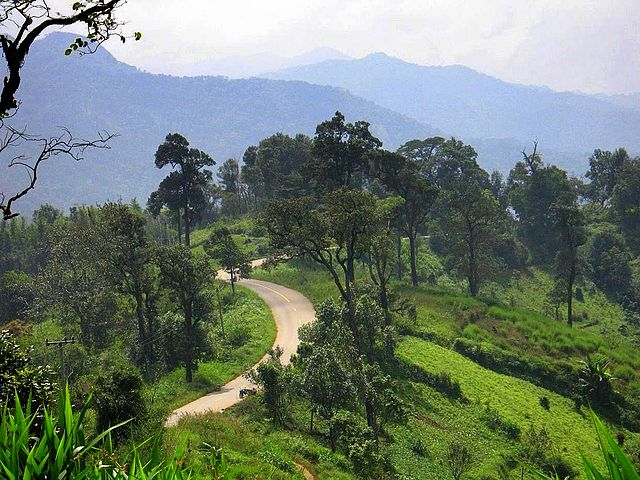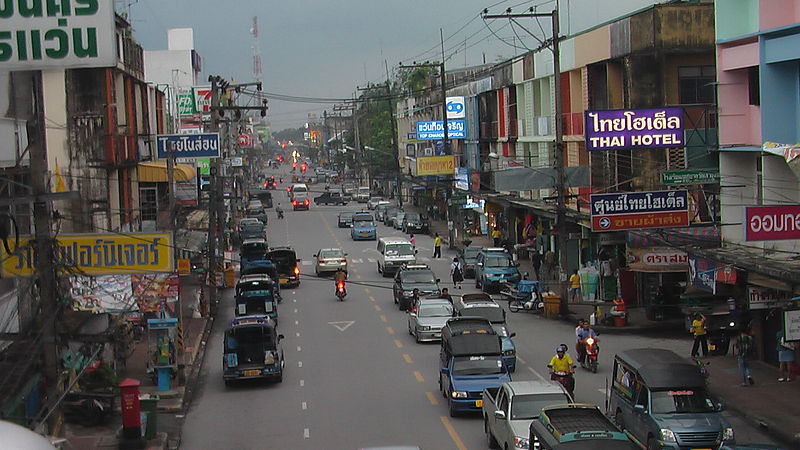
The Thammasat University Libraries have acquired two new books about the importance and value of roads. Roads and Anthropology: Ethnography, Infrastructures, (Im)mobility and Roads: An Anthropology of Infrastructure and Expertise deal with the social, economic, and human aspects of when roads are built, and when they are not.
Roads: An Anthropology of Infrastructure and Expertise is by Penny Harvey and Hannah Knox. Penny Harvey is Professor of Social Anthropology at the University of Manchester, UK, and Director of the ESRC Centre for Research on Socio-Cultural Change. Hannah Knox is a Lecturer in Digital Anthropology and Material Culture at University College London. They examine highway building projects in South America to see what can be revealed about social relations and other aspects of life. Using ethnographic and historical approaches, Drs. Harvey and Knox describe how engineers and scientists in Brazil and Peru deal with public officials and construction company supervisors. Local people are also involved, especially their hopes to earn more money when their regions are better connected to the rest of the world. Along such roads, commerce becomes easier. The authors conclude that infrastructure may be as uncertain and unstable as nature itself. By experimenting and invention, engineers manage to create what the authors call stable and useful fictions, making infrastructure projects such as roads possible.
Roads and Anthropology: Ethnography, Infrastructures, (Im)mobility is coedited by Dimitris Dalakoglou, a senior lecturer in anthropology at the University of Sussex, and Penny Harvey.

Road safety in Thailand
As all Thais know, in the Kingdom the highway network is governed by the Department of Highways (DOH), and Department of Rural Roads (DORR), under the oversight of the Ministry of Transport. The network covers some 70,000 kilometers across the nation. The safety of roads is always a matter of concern in every country. In May, a World Health Organization (WHO) report indicated places where Thailand might still improve in this category. While Thailand had considerably fewer road fatalities for the year 2015 than China, with 14,000 compared to over 260,000, issues remain. About one-fourth of road fatalities in the Kingdom are alcohol-related. Pedestrians, cyclists and motorcyclists are the most vulnerable people when road accidents occur. Whereas in the rest of the ASEAN community, about one-half of road accident victims are pedestrians, cyclists and motorcyclists, in Thailand, they constitute over 80 percent of fatalities. As is well known, there is a law in Thailand requiring drivers and passengers of motorcycles to wear safety helmets, but only about half of drivers, and less than one-fourth of passengers, take this precaution. The WHO report notes that the Kingdom’s Road Safety Directing Center is funded in the national budget and a national road safety strategy exists, with partial funding to implement strategy. Other elements which can improve road safety have not yet been implemented. There is a lack of formal audits required for new road construction projects, regular inspections of existing road infrastructure, and policies to promote walking or cycling. While there are policies to encourage investment in public transport, policies do not separate road users and protect so-called vulnerable road users (VRU). Intelligent transportation systems (ITS) are advanced applications which try to provide new services for different modes of transport and traffic management, informing users and promoting safety, coordination, and smart use of transport networks. In 2010, a European Union Directive defined ITS as systems in which information and communication technologies are applied in the field of road transport, including infrastructure, vehicles and users, and in traffic management and mobility management, as well as for interfaces with other modes of transport. The same directive defined VRUs as
non-motorized road users, such as pedestrians and cyclists as well as motor-cyclists and persons with disabilities or reduced mobility and orientation.
For vehicles driven by Thais, there is not yet a requirement for a frontal impact standard or electronic stability control to promote driving safety. Road safety does not just affect Thais, but anyone traveling through Thailand. In February, Thailand hosted a meeting with relevant government agencies and the private sector operating tourism and car rental services, with the aim of regulating tourist driving of personal cars into the Kingdom. Since more tourists are driving on their own cars in Thailand, this can cause road safety concerns for local motorists. In China, drivers advance on the right side of the road, the opposite of the Thai system. More and more Chinese tourists drive through Thailand’s northern checkpoints at festival time. During the Chinese New Year festival, many tourists from China drove through Thailand’s Chiang Khong border checkpoint on their way to Chiang Mai and Chiang Rai. In just two weeks, over 4,000 vehicles from China passed through the northern immigration checkpoint and many accidents have resulted from the unfamiliarity of Chinese drivers with Thai driving laws. Mrs. Kobkarn Wattanavrangkul, Thailand’s Minister of Tourism and Transport, observed that ASEAN tourists prefer driving on their own cars into Thailand, rather than choosing public transport, and private vehicles are becoming more frequent at almost all immigration checkpoints. One plan is to ask tourists to park private cars at the checkpoint and continue their journeys in rental cars. Chiang Mai province is seeing an influx of Chinese cars and travel trailers. Many of these Chinese drivers carry no private accident insurance, and after they return home, it is difficult for Thai drivers whose vehicles were damaged to collect payments. Chinese vehicles passing through checkpoints to Thailand typically only carry Compulsory Motor Insurance, which covers compensations for personal injuries and fatalities, but not for vehicle damage. The Chinese Consulate General in Chiang Mai province has been asked to advise Chinese tourists driving through Thailand to purchase personal accident insurance. Khun Pornchai Jitnawasatien, chair of the Chiang Mai Tourism Business Association, suggested that all foreign vehicles driving in the Kingdom must be insured to ensure mutual safety. The modest expense involved would easily be covered by the Chinese tourists. The Department of Land Transportation is preparing new regulations requiring Chinese motorists to alert authorities in advance of future plans for driving in Thailand with personal vehicles, as well as carrying international insurance coverage.
Hope from students.
In another initiative, in January Dr. Thanapong Jinawong, chief of the Road Safety Policy Foundation, underlined that Thai schools
need to be teaching teens about road safety.
He suggested that schools should be more active in teaching why wearing helmets on motorcycles is necessary. Such good safety advice might into afternoon activities at many schools that might might otherwise reduce classroom hours. As Dr. Chanin Manopiniwes, an infrastructure economist at the World Bank in Bangkok, blogged at the World Bank website in 2014, in terms of road safety in Thailand:
New generations still need to be taught, and older generations reminded.
(All images courtesy of Wikimedia Commons).


